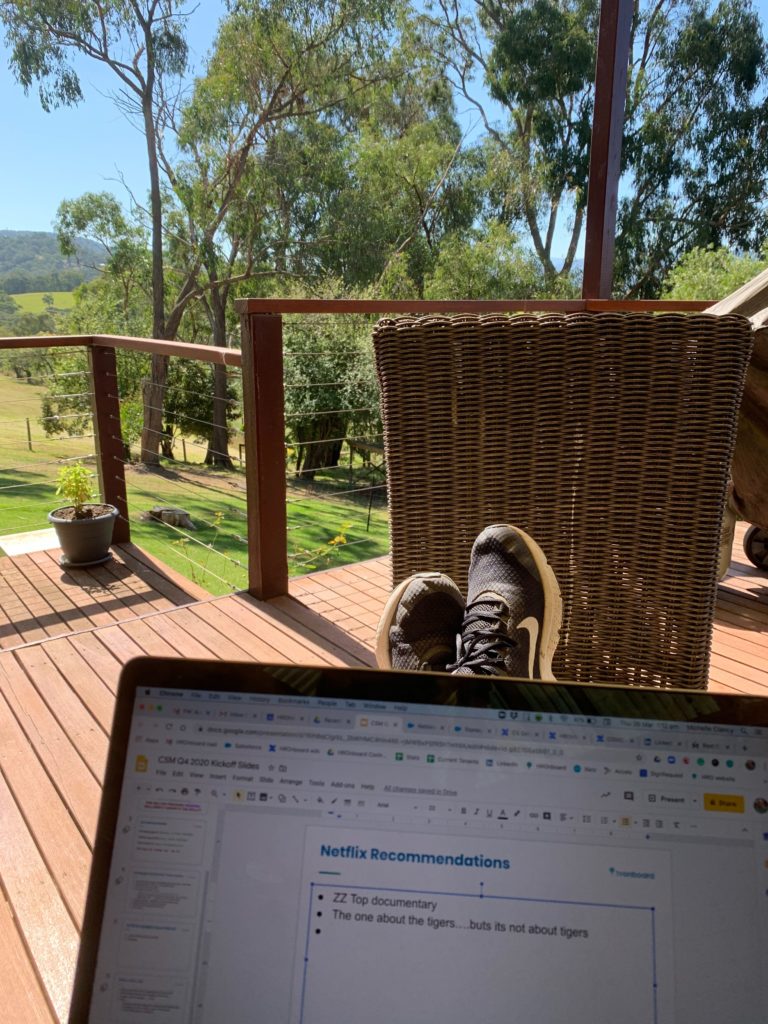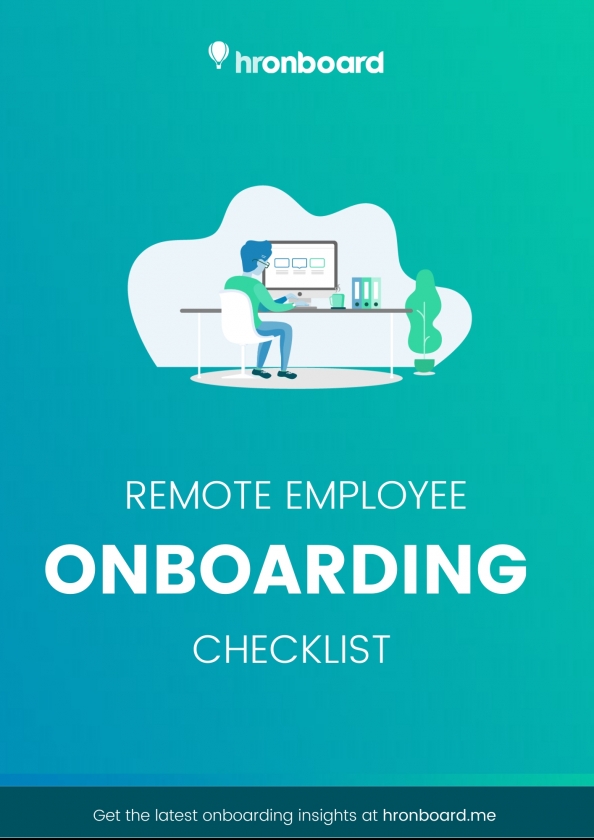Remote Employee Onboarding 101: A Guide For HR Teams
HR departments will need to be nimble in their approach to recruitment moving forward. Decentralising the control of core HR functions can be daunting – but managing new hires remotely comes down to two key aspects – coaching team leaders and enabling the new starters with the right content at the right time.
6 Steps to remote onboarding
1. A digital offer acceptance & provisioning experience is a must
Waiting weeks for a signed contract is not acceptable in the rapid world of remote onboarding. Putting the lack of trust in receiving physical goods to one side, remote means delays if you’re using traditional methods of sending contracts.
These delays can be further impacted by mandatory security checks. And in this current climate speed can make all the difference to your business continuity or restructure.
A digital solution for creating offers also means that you don’t have to wait for multiple departments to sign off before offers are sent. Sending pre-built dynamic digital contracts is quickly becoming the norm and a real-world solution for remote onboarding.


Gray from Vodafone shares some Remote onboarding tips
2. Get hardware to remote teams – securely, setup and ontime (it is possible!)
To ensure remote employees have the tools to be ready for day 1, recruiters & HR teams need to evolve their processes and work in close collaboration with provisioning teams. With rapid, remote onboarding evolving daily – recruiters and onboarding managers need to evolve with the restrictions and limitations. Vodafone is one company that has been forced to be agile. The redistribution of their retail staff to contact centre teams has required a dedicated remote onboarding program to be rolled out in days, not weeks. To date, over 1,000 employees have been set up to work remotely. Gray Wilson, Talent Acquisition and Employee Experience Manager from Vodafone knows the importance of having the hardware delivered in time for their new starters’ first day.Their new starters first day will typically look like this:
- Spend time getting their equipment logged in and ensuring critical applications are fully operational.
- Getting connected to the tools of trade and setting up email on devices.
- Getting familiar with key applications that are required.
- Spend time with their leader to cover off key requirements, team rituals and establish how you will effectively work as a remote team member.
Gray knows that any missing links in their induction will be obvious to a remote worker and make them question their longevity. The importance of a well structured first week is an opportunity to reassure the candidate that they have made the right choice coming onboard.
One commitment that they have flagged as critical is the internal service level agreement. Ensuring user access to management systems is a priority; implementing a ‘hot-swap’ for any device issues with a same day courier is one way they meet this agreement.
Adapting their onboarding strategy has required a lightning fast shift in cross-department communication. Creating a team where each department had a voice made it possible to redeploy their staff in a time frame that previously would have been thought unthinkable.
3. Re-think and Review
Working together with internal teams to turn traditional procedures into innovative solutions can be as simple as a digital re-think.
Gray from Vodafone outlines areas that transformed their remote onboarding:
- Migrating inductions that would commonly be done in-person to a virtual online video gives the added benefit of refining the content delivered. Scheduling the virtual induction into the new hires calendar means that it is ready and waiting for them to access on their first day.
- Mapping out the onboarding process gives remote workers the ability to self-manage their development and increases their capability. Going digital gives the freedom to include tasks that contribute to acclimatising to the role and culture; leading to a higher retention rate over the long-term.
- It’s not a set and forget situation though – constant reviews of procedures should be scheduled at key intervals to ensure that they are working well.
Gathering feedback from your new hires should be part of the process along with HR analytics data that is easily accessible through your digital onboarding solution. If you don’t know for sure what is working for you then you are just flying blind.
4. Coach team leaders to manage remote teams
During times of difficulty, employees can require a heightened sense of management. Same goes for your leaders too.
Developing virtual training to team leaders managing a team remotely is a great place to start. Coaching your team leaders to lead in a way that is empathetic and supportive in a digital environment will do wonders to a businesses success.
We all know that a direct manager can make or break an employee’s experience. Training them to be the first responders to drive your business culture and values will mean that new hires are more likely to get onboard. Giving team leaders the resources they need to guide their remote teams in the right direction will mean that new hires are capable faster.
Vodafone is devoted to the safety and wellbeing of their employees whilst working from home. Their remote onboarding guide outlines tips for their new hires:
Vodafone’s remote onboarding tips for their new hires:
- Treat it like a real job. For example, just because you could lounge around in your pyjamas doesn’t mean you actually should. Get out of bed at your normal time, have a shower and get dressed. Treat it like you would if you are working from the office.
- Follow your normal working routine. For example, get up, shower, go to the gym/exercise, have a coffee and breakfast before logging into your workstation.
- Set up a Workstation. Don’t lay in bed with your laptop, set a designated workstation. Your workstation setup at home is to provide an adequate and safe working environment. As a minimum, you will require a desk or table of suitable height and a comfortable chair providing basic back support. You should ideally have enough space on your desk or table for all equipment and have appropriate lighting. Try to be mindful of ergonomic principles when setting up a work environment.
- Set boundaries. Make sure anyone who lives with you is aware that you are ‘at work’. Create boundaries within your home that your family members or flatmates understand, i.e. If the door is closed, I’m working and would prefer not to be disturbed. Try to set yourself up away from shared living spaces if you can.
- Have breaks. Have regular breaks, look away from your screen often, get up and walk around to take a break from your workstation, go for a walk outside if possible or have lunch at a local café. Don’t forget to stay hydrated.
- Use technology to interact. Use video calls to conduct meetings and have conversations to lessen any feelings of isolation. Have regular video chats with your manager and work colleagues – especially if you live alone. Use technology to connect and interact with your teams, for example have a virtual lunchbreak via Skype or share stories via Workplace.
- Leaders. If you are a new leader, ensure you have regular contact with your team and acknowledge any stresses of difficulties associated with working from home.
5. How we’re managing remote onboarding for our new starters
At HROnboard, we’re going through this extraordinary time alongside our partners and customers. We’re having to adapt to remotely onboard and provision new hires in a world where even sourcing hardware is challenging. We’re not perfect, however ensuring our employees have the tools to be resilient and adapt to the constantly changing way of life we are living right now is our focus.
Having the right tools to extend an offer and onboard employees while working remotely can make all the difference. We know because we currently have three new employees at different stages of their journey. We use our own platform to curate a welcome journey that aligns with our new hires working remotely. From the moment they accept their offer, we immerse them in our culture and values through bite-sized information in their first few months with us. Humanise the experience by using digital technology to recreate that human connection.
We are a social bunch at HROnboard where random chats in slack channels, GIF responses and remote “lunchroom” hangouts are part of our working day. This makes it easy for a new hire to feel immersed in our culture. We value every team member and encourage them to be who they are. And nothing says being yourself like a virtual dance-off at 3.30pm everyday!
Working from home poses a short term challenge for businesses with some serious long term benefits if managed well. By taking the time to ensure you have the foundations of an epic remote onboarding experience to enable a positive work environment, remotely will do wonders to your team performance and morale.

For more tips on onboarding remote staff, download our checklist:

